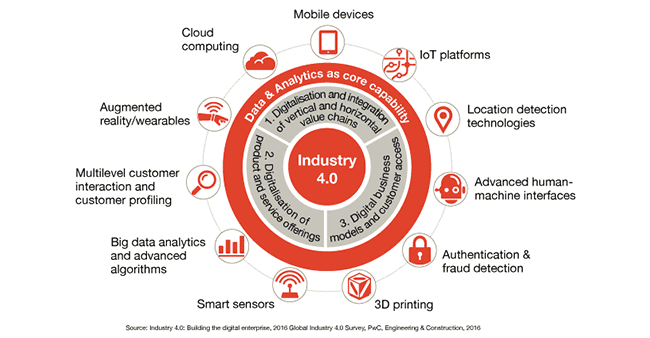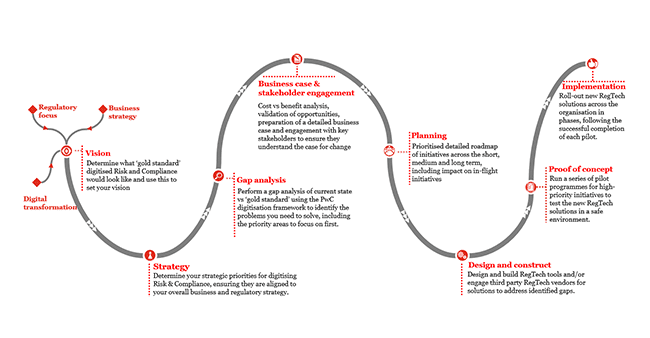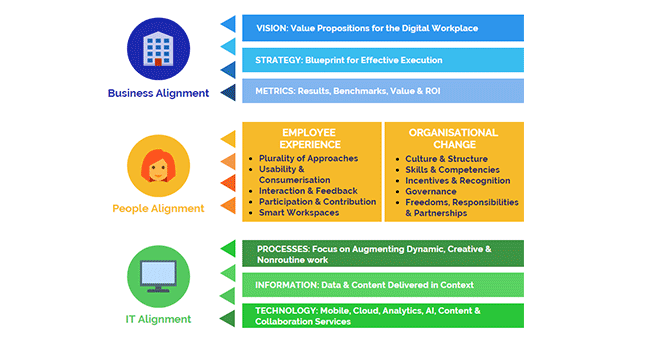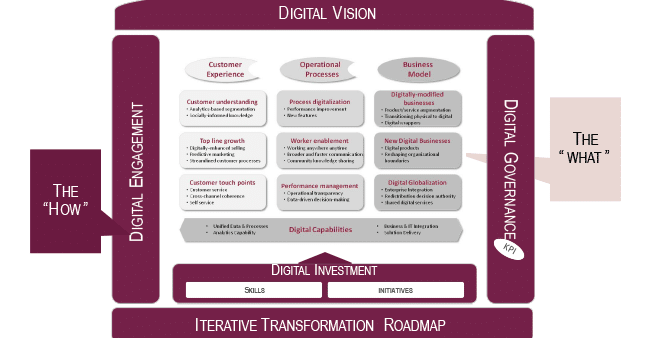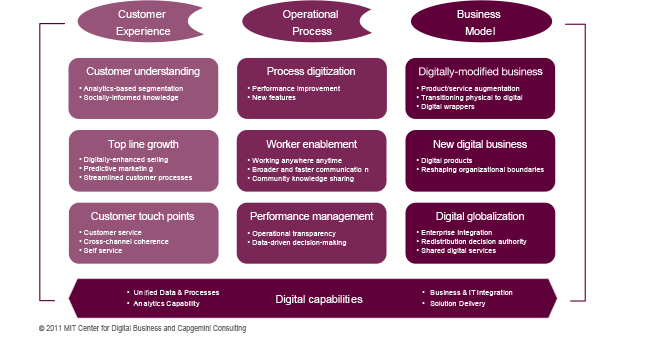
The best digital transformation frameworks in 2020
>
The best digital transformation frameworks in 2020
Digital transformation frameworks make it easier for organizations to make digital change. Everywhere you turn, those making digital change are winning 💪 the game of business. Surrounded by a fearless culture of innovation, enterprises have to make a choice. To change or to perish?
A few organizations had the vision to begin planning digital change years ago. These organizations saw the opportunity 😊 to gear up to tackle new sales channels, new products and services, and customer experiences.
However, the majority of businesses are scrambling to leverage an ever-evolving array of digital technologies and develop new value propositions for their customers.
What companies are making digital transformation?
In November 2011, a three-year study conducted by the MIT Center for Digital Business and Capgemini Consulting. The report concluded that only one-third of companies globally have an effective digital transformation program in place.
Other reports suggest similar digital immaturity. According to the McKinsey Global Institute’s 2016 Industry Digitization Index, Europe is operating at 12% 👎of its digital potential, while the United States is operating at 18%. Within Europe, Germany operates at 10%, while the UK is almost on par with the United States at 17%.
Fortunately, folk have written systems to help make digital change easier. These systems are called digital transformation frameworks or DX frameworks.
Accenture, Deloitte, McKinsey, EY, PwC and a few new players like Ionology and DXC are offering their customers proprietary DX frameworks. DX frameworks have a few other names. Digital transformation strategy, digital business transformation, digital enterprise framework, customer experience transformation, and digital transformation strategy roadmap. They are all commonly regarded as, or related to,✌ DX frameworks.
Why you need a framework for digital transformation
Digital change comes with a high degree of failure 😂. McKinsey’s research shows the success rates are low. Less than 30 percent of companies succeed. Digital change comes with a high degree of resistance. You may have the support of the executive team, but what does the rest of the organization regard the change?
While digital transformation frameworks alone cannot ensure success, they can mitigate failure. Many digital transformation frameworks were written after years of academic research was first carried out. So a lot of learning about what to do and what not to do are captured in DX frameworks.
For example, a good digital transformation framework dispels 🙌 a myth that DX is about digitizing processes and choosing technology. Digital transformation is more about transforming people than technology. In a report by Accenture, the consulting firm states that 75% of obstacles blocking digital transformation today are non-technical factors.
Says Jeanne Ross, principal research scientist at the MIT Sloan Center for Information Systems Research.
“Our research suggests the reason why it’s so hard is that most established companies do not yet have the capabilities they need to become digital.”
These comments by Ross were echoed in a report published by the consulting firm CapGemini, suggesting that missing skills was a gap 🙌 in an organization’s digital transformation roadmap. In a second piece of research, CapGemini name culture as the biggest hurdle organization’s face making digital change.
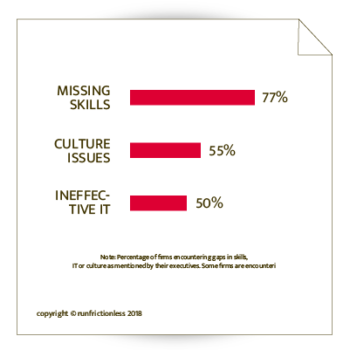
Eliminate friction and reach predictable revenue
Eliminating friction is one way in which IT can help create predictable revenue. Friction is any obstacle preventing a customer from making a buying decision. When you eliminate friction, you stand to not only improve customer experience but simultaneously improve sales. You see, the customer experience and sales are two sides of the same coin. If you decrease friction, you increase sales.
Friction has a quotient and can be measured👌. The higher the organization’s friction score, the greater the likelihood they will benefit from digital change. Digital transformation introduces automation and online experiences, eliminating the friction associated with manual processes.

EXPECT REVENUE LAG
However, revenues which digital change are suppose to bring are 🤫 slow. According to Jeanne Ross, MIT, even organizations that have made progress will tell you, the investment is high and the short term rewards small.
Ross continues, “That’s five years of having a vision and pursuing that vision, and revenue from digital offerings is accounting for just 5% of their [total],” Ross said. “Any of these companies will tell you there is a level of capability development and customer development that has to be done, and it’s not easy.”
Perhaps chasing revenue 👏 is not the single reason for making digital change. In a report prepared by CapGemini Consulting, the firm uncovered customer expectations and threats from competitors are drivers of digital transformation among top organizations.
This is a more realistic expectation. Digital transformation is not an assurance of revenue, as revenue is connected to many factors of which digital transformation is one.
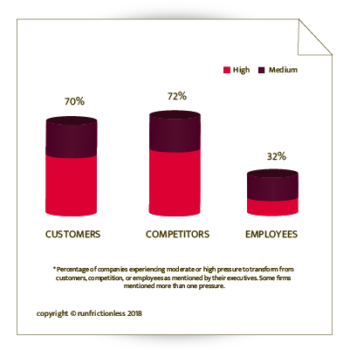
Companies which were not born out of the 1990s internet boom are expected to be worse off without digital transformation. For the first time since the subprime crisis, banking industry growth has slowed down to just 3% year-to-year. Banking revenues in the EU and the US are nearly flat. Margins are narrowing while costs are rising. As a result, return on equity is only 8.6% globally.
That means managing an organziation’s digital change isn’t critical to beating competitors; it’s crucial to survival.
+3%
Global banking industry growth (down from 6% in 2015)
+1%
Banking industry growth in the EU and in the US
8.6%
Returns on equity globally (down from 9.6% in 2015)
Which are the best digital transformation frameworks?
Each of the big consulting firms recognizes digital transformation is important for their customers. So which ones are offering the better DX frameworks? We review over ten different frameworks. Don’t expect to find instructions on how to use their frameworks. We found little in the way of how to use each framework. I suppose they want us to contact them $$$.
> ACCENTURE’S THE DIGITAL ENTERPRISE FRAMEWORK
> PWC’S INDUSTRY 4.0 DIGITAL TRANSFORMATION FRAMEWORK
> EY’S DIGITAL TRANSFORMATION FRAMEWORK
> MCKINSEY’S 4DS DIGITAL TRANSFORMATION FRAMEWORK
> KPMG’S SIX DIMENSIONS OF I4.0
> DELOITTE’S DIGITAL INDUSTRIAL TRANSFORMATION FRAMEWORK
> GARTNER’S DIGITAL TRANSFORMATION FRAMEWORK
> CAPGEMINI’S DIGITAL TRANSFORMATION FRAMEWORK
> MIT’S FIVE BUILDING BLOCKS TO DIGITAL TRANSFORMATION FRAMEWORK
> COGNIZANT’S DIGITAL TRANSFORMATION FRAMEWORK
> DXC’S TECHNOLOGY’S DIGITAL TRANSFORMATION FRAMEWORK
> ALTIMETER’S SIX STAGES OF DIGITAL TRANSFORMATION FRAMEWORK
> IONOLOGY’S SEVEN PRINCIPLES OF DIGITAL BUSINESS STRATEGY FRAMEWORK
Unfortunately, we turned up no information about digital transformation frameworks written by Goldman Sachs or JP Morgan. That said, many organizations like SAP, Cisco and IBM have written their own digital transformation frameworks and playbooks. We will look at these ‘inhouse’ digital transformation frameworks in another article.
Accenture digital transformation framework
Accenture is an organization that has swallowed its own medicine. For the last 15 years, this company has digitally transformed their business. Employees have the freedom to choose when, where and how they work. There has been a reinvention of client relationship management. They now use more collaboration tools available in the cloud.
Accenture has written several industry-specific DX frameworks, including one for the manufacturing sector. They call it the Digital Factory and outlined eleven enablers. According to the 2015 Accenture Strategy Global Manufacturing Study, greater adoption of these enablers can lead to stronger and more sustainable business performance.
In 2019 Accenture released a digital transformation framework titled The Digital Enterprise Framework.
Accenture’s digital business strategy framework addresses the decisions, actions, and investments required to build a digital business. Accompanying this framework are questions leaders must ask themselves. What are the digital disruption opportunities, threats, and outcomes? How will enabling technologies and trends support differentiation and sustainable growth?
PwC digital transformation framework
PwC mark ✊ digital transformation as Industry 4.0. Industry 4.0 is a natural outgrowth of the third industrial revolution, which transformed the nature of commerce in the second half of the 20th century. It was marked by the emergence of credit cards, just-in-time supply chains, and the first online business models.
“Industry 4.0” refers to the fourth industrial revolution, which connects machines, people, and physical assets into an integrated digital ecosystem that seamlessly generates, analyzes and communicates data.
When PwC conducted research on Industry 4.0 in 2014, companies knew about digital transformation, but few were making digital change. In 2016, PwC claims the trend changed. For many companies Industry 4.0 digital transformation is now at the heart of their strategy.
PwC offers some advice on how to apply Industry 4.0 DX framework to enterprise organizations.
PwC offers a digital transformation roadmap. Their digital transformation roadmap takes into account other factors affecting the customer. Delivering digital change is as important as the strategy.
EY digital transformation framework
EY has been recognized by Forrester Research as a leader in The Forrester Wave™: Global Digital Business Transformation Accelerators, Q1 2019. The report assessed global consultancies, technology integrators, and digital agencies for their abilities to help CIOs select the right provider for their digital transformation initiatives.
The EY DX framework is divided into six parts: the bridge, the engine room, innovation, design, deploy and digital factory. Unfortunately, searching the public domain, I was not able to find any more information about EY’s DX framework.
McKinsey digital transformation framework
McKinsey has a proprietary DX framework called the 4Ds. The purpose of the 4Ds is to aid a company’s reinvention in order to find new and significant sources of revenue.
According to the McKinsey framework, the 4D’s of digital transformation are Discovery, Design, Deliver, and De-risk. The Discover stage involves developing your business strategy. Where is value created and destroyed? This requires an analysis of the business, sector and customer behavior trends.
Digital change can be daunting. During the Design stage, McKinsey’s recommend organizations focus on the most important☝ customer journeys, then build out more customer experiences, using design thinking. In this phase, the company must avoid endless rounds of planning. Instead, effort should be directed on build prototypes, which translate concepts into minimum viable products.
The Deliver stage focuses on developing a network of partners who can help you scale. This means working with a mix of platform players, delivery specialists, and niche players.
One of the most common reasons digital transformations fail is that the organization develops 😂 ‘change exhaustion’. McKinsey’s 4Ds includes De-risk stage to guard against failure. De-risk stage focuses on quick wins that build momentum and generate revenue. That revenue can be re-invested in the next round of transformations.
It appears that McKinsey recently redefined its 4Ds digital transformation framework. It appears the acronym 4Ds is now short for Data, Decisioning, Design, and Distribution.
McKinsey has also created a framework called the six building blocks for creating a high performing digital enterprise. They claim this framework provides executives with a coherent structure for planning and managing large-scale digital change.
McKinsey writes “Companies that have successfully transitioned to become high-performing digital enterprises are able to orchestrate six building blocks. These include strategy and innovation, the customer decision journey, process automation, organization, technology, and data and analytics. Not every digital initiative requires each building block to be used to the same degree. Also, some blocks serve as natural starting points.
KPMG digital transformation framework
KPMG have done a project with Rolodex Agency to increase awareness of digital transformation among its staff and partners. We developed an idea for a pop-up podcast studio where experts, higher management, clients and the workforce could start digital dialogues to discuss the future of consulting. Nothing like swallowing your own poison.
And like PwC, KPMG are talking about Industry 4.0, or i4.0 as KPMG calls it. They have identified six dimensions of i4.0.
Each dimension of KPMG’s digital transformation framework addresses a facet of digital change.
I will discuss the first of three dimensions here. Beginning at 12 o’clock we have strategy and business dimension, which place emphasis on developing a comprehensive i4.0 strategy.
Moving clockwise we arrive at technology – ageing technology and uncertainty around which new technologies to prioritize. The third dimension is finance and risk. This dimension builds an understanding and managing new risks related to i4.0.
Unfortunately, searching the public domain, I was not able to find any more information about KPMG’s DX framework.
Deloitte digital transformation framework
Deloitte’s Digital Industrial Transformation Framework presents five questions. Each question is centered around the concept of agility, digital adoption, and customer success.
What are our winning aspirations? (What do we want our company to be)? Where will we choose to play, and who will we win in these markets – eg which customer and pricing? What capabilities are needed? Which capabilities must be built, refined or bought? How should capabilities be configured? Who has ownership and decision rights? What business processes, technology, and management systems are required?
Gartner digital transformation framework
Gartner makes the case for why digital transformation starts at home. Carol Rozwell, vice president and distinguished analyst at Gartner, says:
Rozwell goes on to say the digital workplace promises a more flexible and engaging work environment, capable of exploiting changing business conditions. Gartner has identified the eight critical components — building blocks — required when planning, directing and evolving digital workplace programs.
Gartner also wrote a six-step digital transformation framework, enabling CIOs and other business leaders to build a successful digital enterprise. Let’s put the steps 1, 2 and 3 under the lens.
The first step is creating the right mindset and shared understanding. Gartner believes leaders need to recognize 😲 ‘business moments’ in their organization’s development. Business moments are important because they force enterprises to reinvent. The hallmark of digital business is the ability to spot these opportunities.
The second step is putting the right leaders in place. Earlier we identified digital skills as a gap in organizations. Three types of digital business leader have emerged to fill these leadership gaps:
Launching a digital business center of excellence is the third step. This center provides the advice, innovation, and cross-pollination needed to execute a digital transformation roadmap.
CapGemini digital transformation framework
CapGemini Consulting was one of the first to come up with a digital transformation framework. They have a division in their business called Capgemini Digital Transformation Institute. The company collaborated with the MIT Center for Digital Business. During a three-year study, the two consulting firms looked at the ‘what’ and the ‘how’ of digital change.
CapGemini’s DX framework digitally transforms three key areas of an enterprise: customer experience, operational processes and business models. Within each of the three pillars, different elements are changing. These nine elements form a set of building blocks for digital transformation.
The nine elements are grouped under three stages. Authors of the CapGemini DX framework claim no company in their stable has transformed all nine elements. Rather, executives select a handful of building blocks to transform based on their organization’s needs.
The first stage transforms the customer experience. Companies can use CapGemini’s DX framework to understand their customers in new ways. For example, they can uncover new segments using AI.
The second stage deals with the transformation of the organization’s operations. Customers are discerning and can identify if a company has had a👎 coat of new paint, as opposed to a reinvention. So the people and their processes must transform if an organization is to deliver on its value propositions presented in stage one.
Stage three is transforming business models. It is about rethinking product development. How can the next product your organization build be intrinsically digital? Firms are building digital wrappers around traditional products. To make digital change, organizations should build✨ new products that are served digitally.
MIT digital transformation framework
CapGemini and MIT created one of the first DX frameworks together. However, it appears MIT took their digital transformation framework in a new direction.
Jeanne Ross, the principal research scientist at the MIT Sloan Center for Information Systems Research, spent years studying companies at the forefront of digital transformation. Ross, along with her co-authors, CISR colleague Martin Mocker and UT Austin professor emeritus Cynthia Beath, identified five building blocks to digital transformation.
“An operational backbone is the underlying foundation of standardized, automated business processes to ensure operational excellence in your core business,” said Ross.
“A digital platform provides components — business, data, and infrastructure — that you can assemble and reuse as you create digital offerings for your customers,” said Ross. “A platform allows you to take your offerings and personalize them for different customers with different needs.”
Shared customer insights track customer profiles. Organizations must develop a reservoir of intelligence 🤔 about both customer problems and potential solutions. Ross says:
Ross continues, “It involves a lot of experiments, innovation, and tests to see what your customers actually want.”
Accountability framework establishes ownership of digital offerings and components. Companies need to adopt a new framework of accountability organized around components rather than functions, product lines, or geographies.
External developer platform allows organizations to scale what is working. An external developer platform helps foster a community capable of delivering end-to-end solutions to customers, much in the way that Amazon and Apple have extended their platforms with integrated offerings from partners.
Cognizant digital transformation framework
Cognizant is an American multinational corporation that provides IT services, including digital, technology, consulting, and operations services. In recent years, Cognizant expanded across the IT services landscape and into business process outsourcing (BPO) and business consulting.
Cognizant’s DX framework is split into four parts, beginning with the customer experience: how to get to know customers better, improve your service levels and digitize the customer experience. The framework bolts on another three parts called which address operations, products & services and the very organization itself.
Cognizant claims to have analyzed digital change across several industries. They have found four common elements that apply to most companies making digital change in✌ both the B2C and B2B markets.
Based on these common elements, Cognizant has developed a DX framework for organizations to follow. Not all elements covered in each part are relevant. For each organization, the framework must be tailored to ensure a fit. For instance, not every organization is ready to operate its business using agile methodology.
DXC Technology digital transformation framework
DXC offers a reality check when making digital change. What does ‘going digital’ mean? Digital change is a powerful business transformation, forcing enterprises to extend, defend and recreate their businesses. In the digital world according to DXC, the consumer is in charge and will define your next move. Asymmetric competition from unexpected sources will be the norm. Winners maintain control while they minimize their asset base.
The DXC digital transformation framework includes four sources of digital value creation. Let’s examine the first three.
The first source of value, Digital Customer Experience, maps customer journeys to identify new opportunities. These journeys are intelligent and personalized. Integration of front-office and back-office processes. Digital-first, omni-channel product experiences.
Business Model Innovation is the second source of value. How to anticipate asymmetric competition. Explore new networks for products and services across an ecosystem. Minimize the asset base. Reach out to a digital workforce, maximizing flexibility.
The third source of value is Digital Business Process Transformation. Value can be captured 🙌 by optimizing IT systems to enhance business performance. For example, digitize business processes like HR and minimizing assets by using third-party software-as-a-service applications.
Altimeter digital transformation framework
After several years of research, the author of the Altimeter DX framework, Brian Solis, says he has identified a series of patterns and processes that form a strong foundation for digital change.
The Altimeter Six Stages of Digital Transformation, grouped those patterns Brian uncovered, into six distinct stages: Business as Usual, Present & Active, Formalized, Strategic, Converged, and Innovative & Adaptive. Unfortunately, searching the public domain, I was not able to find any more information about Altimeter’s DX framework.
Ionology digital transformation framework
Ionology is a late entrant to the consulting business. Their CEO Niall McKeown, founded the company in 1999, and wrote a DX framework they call the 7 Principles of Digital Business strategy. Unlike other consulting firms which have many divisions, Ionology solely and only work on solving digital transformation problems.
Their DX framework is defined ‘as a structure with parts that fit together, join together and work together’.
Technology is not one of the building blocks, but instead, is a combination of all seven blocks. Technology is often assumed to be the driver of digital transformation. However, Ionology believes each of these seven blocks are required for digital transformation.
The framework uses data to understand what is happening in your marketplace. Who are your competitors, how much momentum do they have? How can you create a plan to displace them? It also uses data to understand if you are able to attract enough customers with your value proposition.
Closing remarks
While digital transformation frameworks from MIT, CapGemini, and DXC Technologies stand out, you won’t be taking these frameworks 😂 home. There are no user guides in the public domain, so you will have to become a paying customer first.
Even with the help of consultants and a few hundred thousand dollars, don’t expect to roll out these 👎 frameworks quickly. They are not simple and require a lot of customization.
I would like to offer an alternative digital transformation framework called the 4Qs.
Between late 2019 to mid-2020, we conducted over 100 interviews with digital transformation consultants. During each interview, the consultants were shown how to apply the 4Qs to digital transformation and asked to a complete survey.
Here are some of the 👍 results of the survey.

grab the
whitepaper
DIGITAL TRANSFORMATION PLAYBOOKS
DIGITAL TRANSFORMATION ASSESSMENT TOOLS
DIGITAL TRANSFORMATION SLIDESHARE RESOURCES

learn more
about the
4Qs








